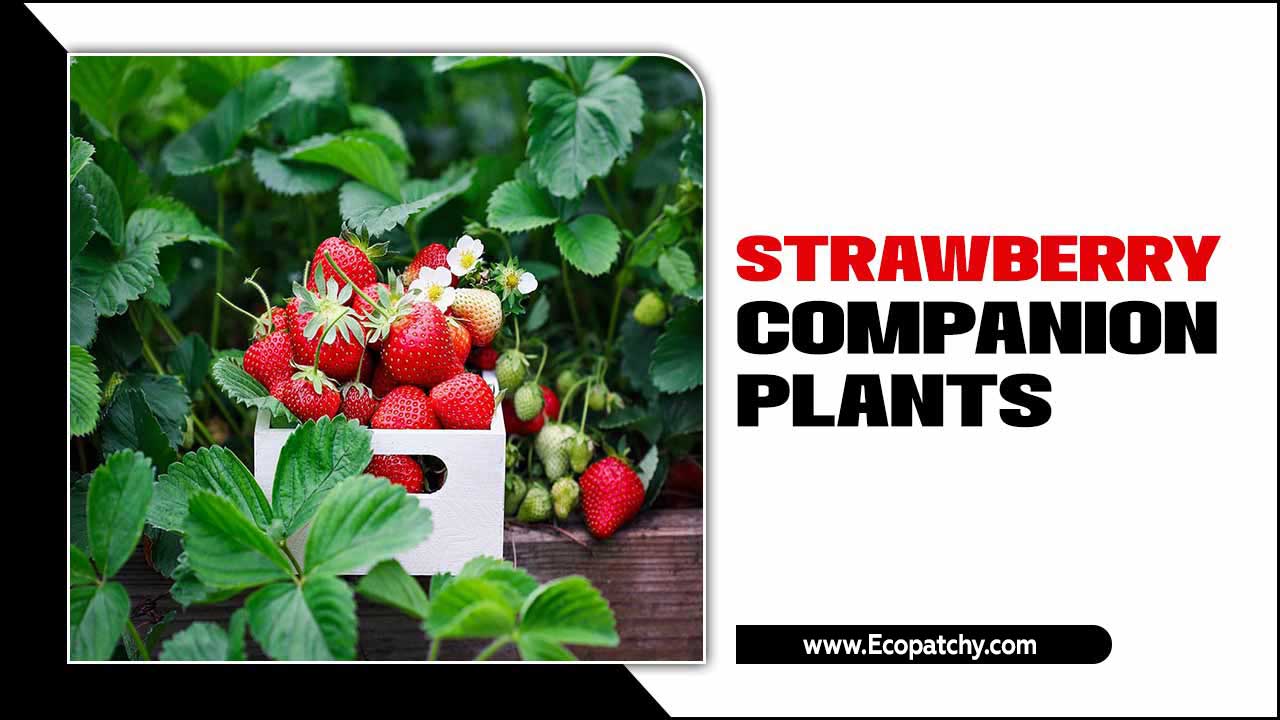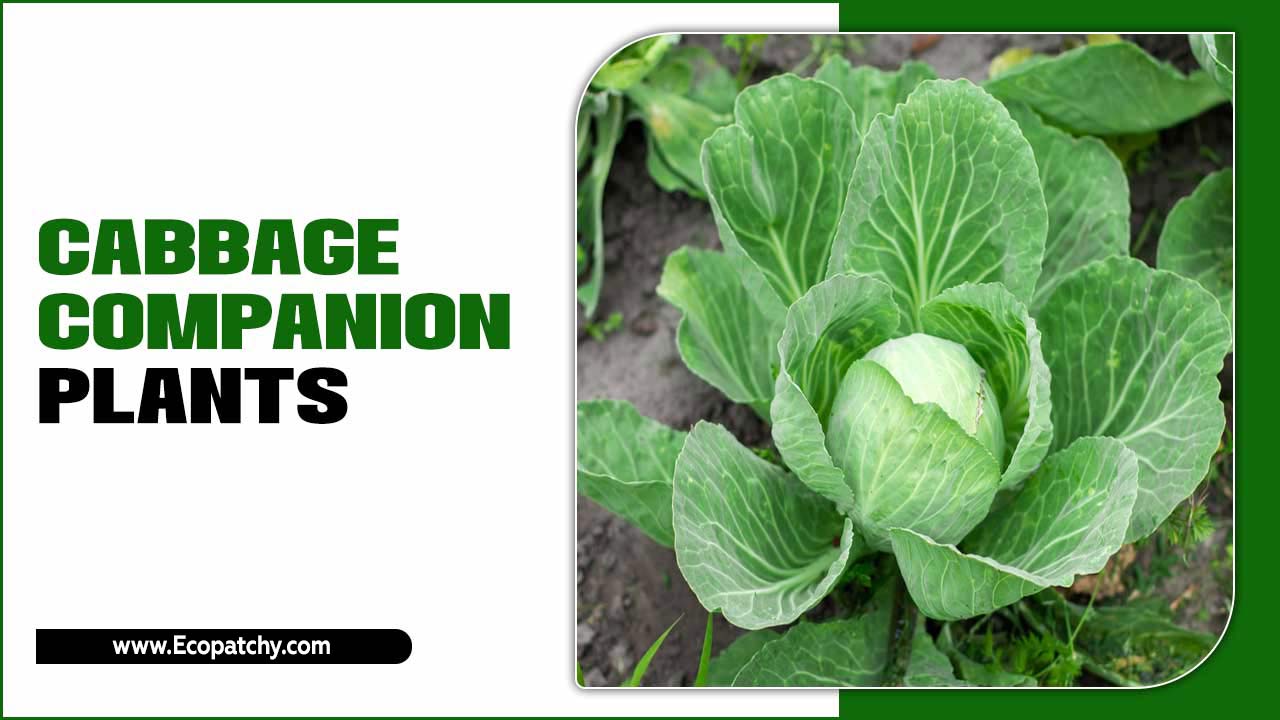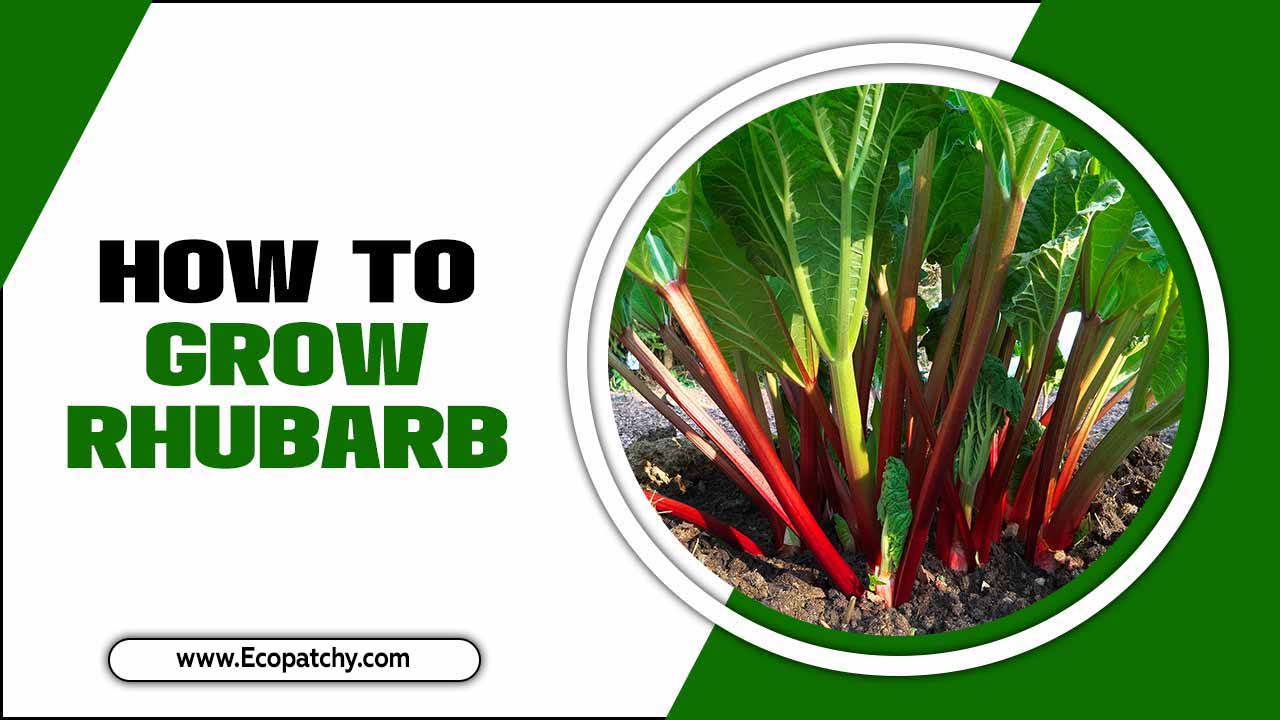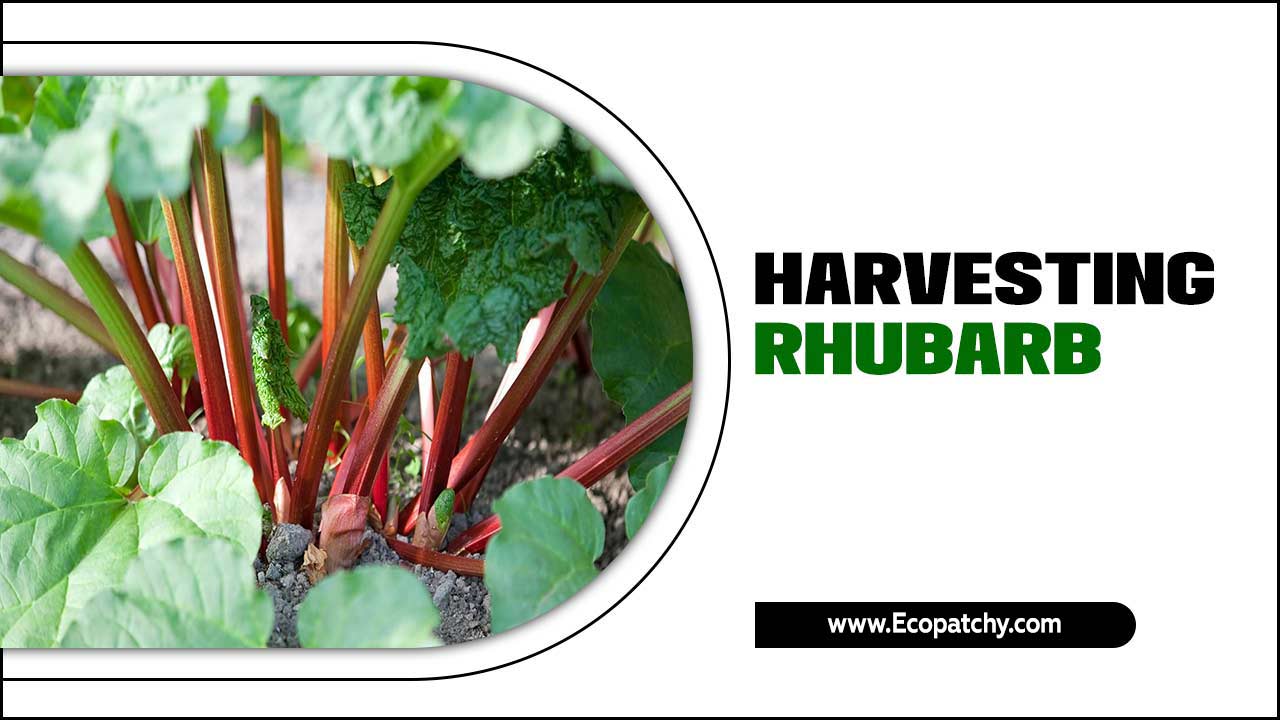Are you looking to improve your rhubarb garden and boost its growth? Companion planting with rhubarb can be an effective way to do just that. Here, we will discuss rhubarb companion plants’ benefits and importance.
We will also provide some factors to consider when choosing companion plants, such as soil and sunlight requirements. Additionally, we’ll share ten of the best companion plants for rhubarb, including strawberries, garlic, and cabbage.
We’ll provide some pest management and disease control tips to ensure your success in planting and caring for rhubarb and its companions. Finally, we’ll discuss harvesting the plants and common issues you may face while companion planting with rhubarb. Get ready to take your garden to the next level!
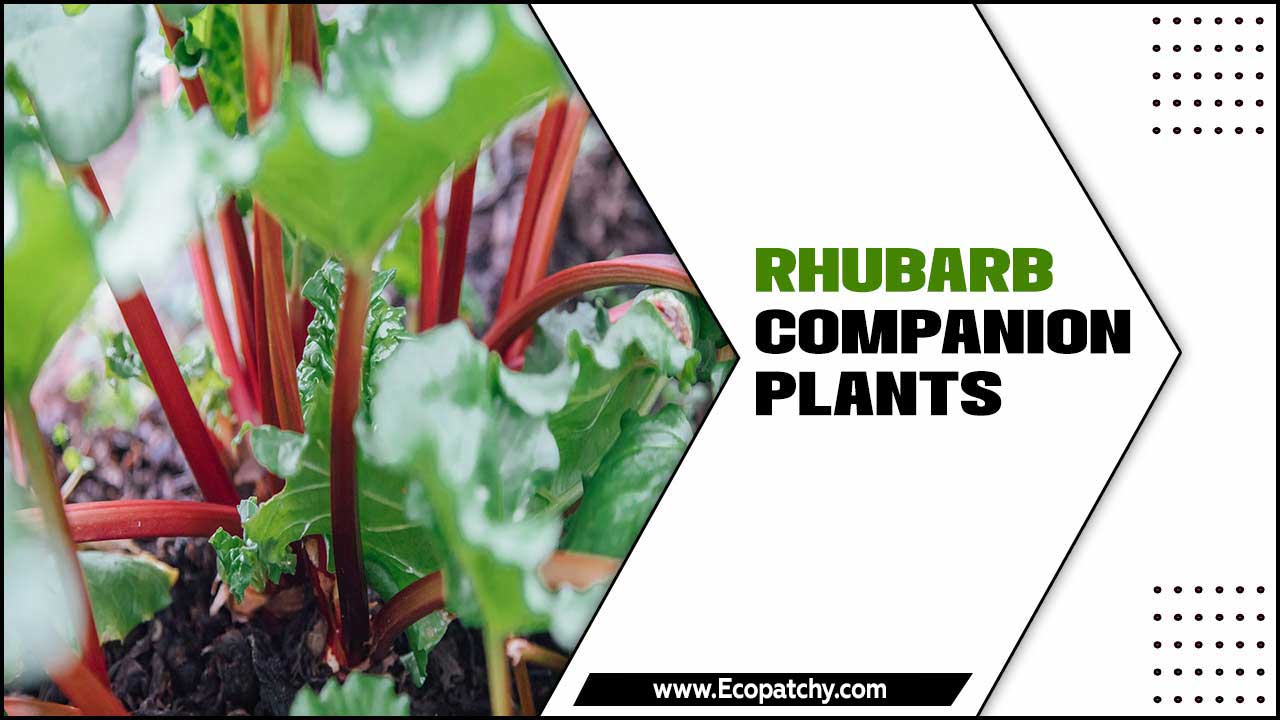
Importance Of Rhubarb Companion Planting
Companion planting with rhubarb offers numerous benefits for your garden. One of the key advantages is that it helps improve soil structure and moisture retention, ensuring optimal growing conditions for the rhubarb plant. Additionally, companion plants play a crucial role in suppressing pests, promoting the overall health of the rhubarb patch.
Another advantage is maximizing garden space and layout by strategically planting compatible companions alongside the rhubarb. Moreover, these companion plants provide additional benefits without cost, making it a cost-effective gardening approach. Furthermore, companion planting with rhubarb can deter unwanted pests while attracting beneficial insects, creating a harmonious ecosystem in your garden.
Benefits Of Companion Planting With Rhubarb
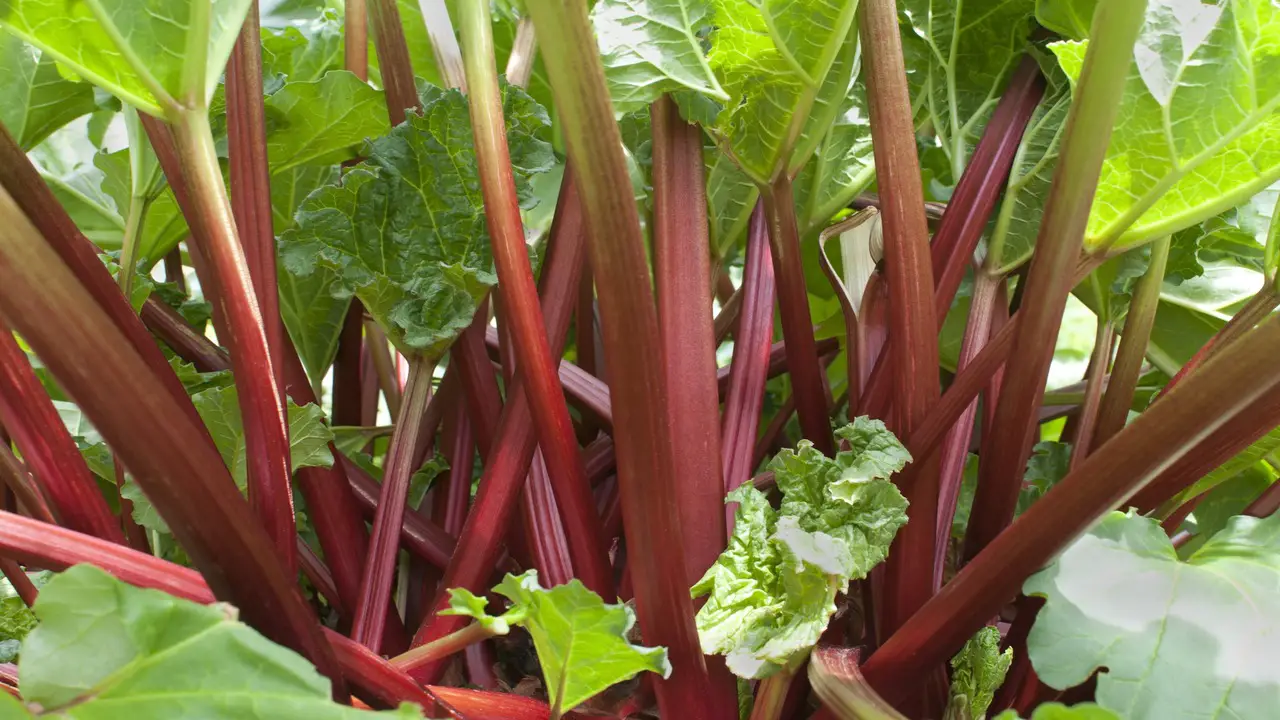
Companion planting with rhubarb can have several benefits for your garden. By incorporating companion plants into your rhubarb garden, you can create a more balanced and thriving ecosystem while reaping the benefits of enhanced pest control, improved pollination, healthier soil, and efficient use of space. Here are some of the advantages:
- Natural Pest Control: You can help deter pests that may damage or eat the leaves by planting certain companion plants alongside your rhubarb. Plants like garlic, onions, and marigolds are known to repel insects and can help keep your rhubarb healthy.
- Improved Pollination: Some companion plants, such as flowers and herbs, attract pollinators like bees and butterflies. This can help increase the pollination of your rhubarb plants, leading to better fruit production.
- Soil Improvement: Certain companion plants, like legumes (beans or peas), have nitrogen-fixing properties. This means they can enrich the soil with nitrogen, an essential nutrient for plant growth. Planting these alongside your rhubarb can help improve the overall health of your garden soil.
- Space Optimization: Companion planting allows you to maximize your garden space by utilizing different levels within a single area. For example, you can plant taller companion plants like sunflowers or corn next to your rhubarb to provide shade or act as a windbreak.
Factors To Consider When Choosing Companion Plants
When choosing companion plants for rhubarb, there are several factors to consider. Considering these factors, you can select the right companion plants for your rhubarb garden and create a thriving and harmonious growing environment. Here are some key points to keep in mind:
- Soil Requirements: Rhubarb prefers well-drained soil with a pH between 5.5 and 7.0. When selecting companion plants, choose ones that have similar soil requirements to ensure optimal growth.
- Sun Exposure: Rhubarb thrives in full sun or partial shade. Consider the sun exposure needs of potential companion plants and select ones that will complement the sunlight conditions in your garden.
- Growth Habit: Rhubarb is a perennial plant that grows in large clumps. Choose companion plants with a similar growth habit, such as other perennials or shrubs, to create a visually appealing and cohesive garden design.
- Pest And Disease Resistance: Some companion plants can help deter pests or attract beneficial insects that can control pests naturally. Research which plants work well with rhubarb to prevent pest infestations and promote overall plant health.
The Importance Of Soil And Sunlight Requirements
When growing rhubarb, understanding the importance of soil and sunlight requirements is crucial for a successful harvest. Rhubarb plants thrive in well-drained soil that is rich in organic matter. Ensuring the soil has good drainage is important to prevent waterlogging, as excess moisture can lead to root rot.
Additionally, rhubarb plants require at least six hours of direct sunlight daily to grow and produce healthy stalks. By providing the right soil conditions and ample sunlight, you can create an ideal environment for your rhubarb plants to flourish and provide you with a bountiful harvest.
10 Best Rhubarb Companion Plants
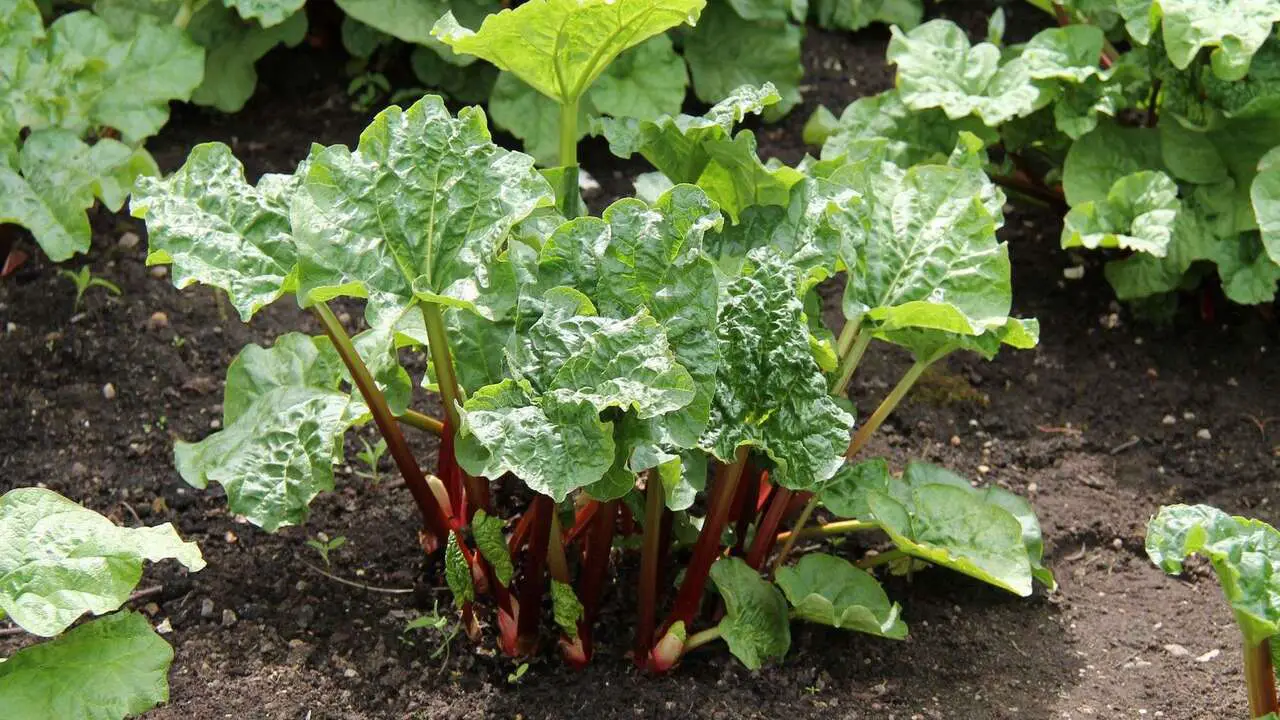
Choosing the right companion plants can make all the difference when cultivating a successful and thriving rhubarb garden. Rhubarb is a versatile and hardy vegetable that benefits from the presence of certain plants that can enhance its growth and repel pests. With that in mind, here are the ten best rhubarb companion plants to help you create a flourishing garden.
1.Strawberries

Strawberries make excellent companion plants for rhubarb due to their similar soil and sunlight requirements. The combination of strawberries and rhubarb is perfect for making delicious strawberry rhubarb pie. Additionally, strawberries attract pollinators, benefiting both the strawberries and rhubarb.
The sprawling nature of strawberry plants also provides ground cover, helping to suppress weed growth around the rhubarb. Another advantage is that the sweet scent of strawberries can mask the strong scent of rhubarb leaves. By planting strawberries alongside rhubarb, you’ll create a harmonious garden layout that enhances the growth of both plants.
2.Nasturtiums
Nasturtiums make excellent companion plants for rhubarb, serving multiple purposes. These vibrant flowers not only add beauty and color to the rhubarb patch, but they also act as natural pest deterrents. Nasturtiums repel pests like black fly aphids and flea beetles, helping to protect the rhubarb plant.
In addition, their peppery taste complements rhubarb’s tart flavor in culinary dishes, enhancing both the visual appeal and the flavor profile. Furthermore, nasturtiums attract beneficial insects, including predatory insects that help control garden pests. Their large leaves also provide shade and protection to the rhubarb plant, creating a harmonious and functional garden layout.
3.Garlic
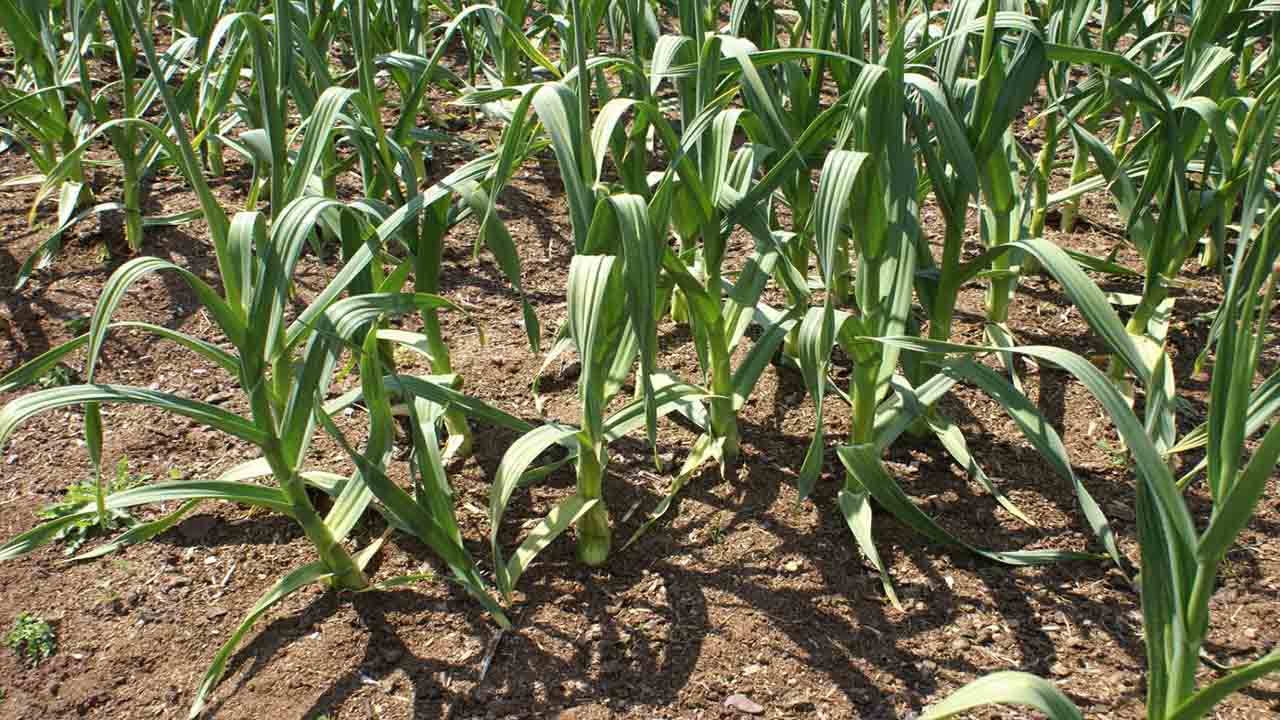
Garlic, a powerful companion plant for rhubarb, offers numerous benefits. Its strong scent confuses and repels unwanted pests like leaf and flea beetles, protecting the rhubarb patch. The sulfur compounds present in garlic improve the rhubarb plant’s overall health and act as a natural repellent.
Additionally, garlic can be harvested and used in cooking, providing a dual purpose in the garden. Furthermore, garlic helps suppress weed growth, maintaining a clean and healthy rhubarb patch. Incorporating garlic into your garden layout alongside rhubarb plants ensures an effective and sustainable companion gardening practice.
4.Marigolds
Marigolds are known for their pest-repellent properties, keeping unwanted insects away from the rhubarb plant. The bright colors of marigolds add beauty and vibrancy to the rhubarb patch. Marigolds attract beneficial insects like bees and butterflies, aiding in pollination. The aromatic scent of marigolds can mask the strong scent of rhubarb leaves. Additionally, marigolds act as a natural living mulch, reducing weed growth around the rhubarb plant. By planting marigolds as companion plants, you can enhance your rhubarb patch’s overall health and productivity.
5.Chives

Chives are excellent companion plants for rhubarb due to their similar soil and sunlight requirements. Their onion-like scent helps repel pests from the rhubarb patch, creating a protective barrier. Chives also attract beneficial insects like bees and hoverflies, contributing to pollination and pest control.
Chive plants‘ slender and upright nature complements the larger and bushier rhubarb plant, creating a visually pleasing garden layout. Additionally, chives can be harvested and used in culinary dishes, adding flavor and versatility to your garden. Utilizing chives as companions to rhubarb is a simple and beneficial practice in companion gardening.
6.Beans
Beans are an ideal companion plant for rhubarb due to their nitrogen-fixing ability. The dense foliage of beans provides shade and helps suppress weeds around the rhubarb plant. Growing beans near rhubarb also attract beneficial insects that aid in pest control. Rhubarb and beans have similar sun and water requirements, making them compatible companions in the garden. Furthermore, the climbing nature of beans maximizes yield by utilizing vertical space. You can create a harmonious and productive garden layout by planting beans alongside rhubarb.
7.Cabbage
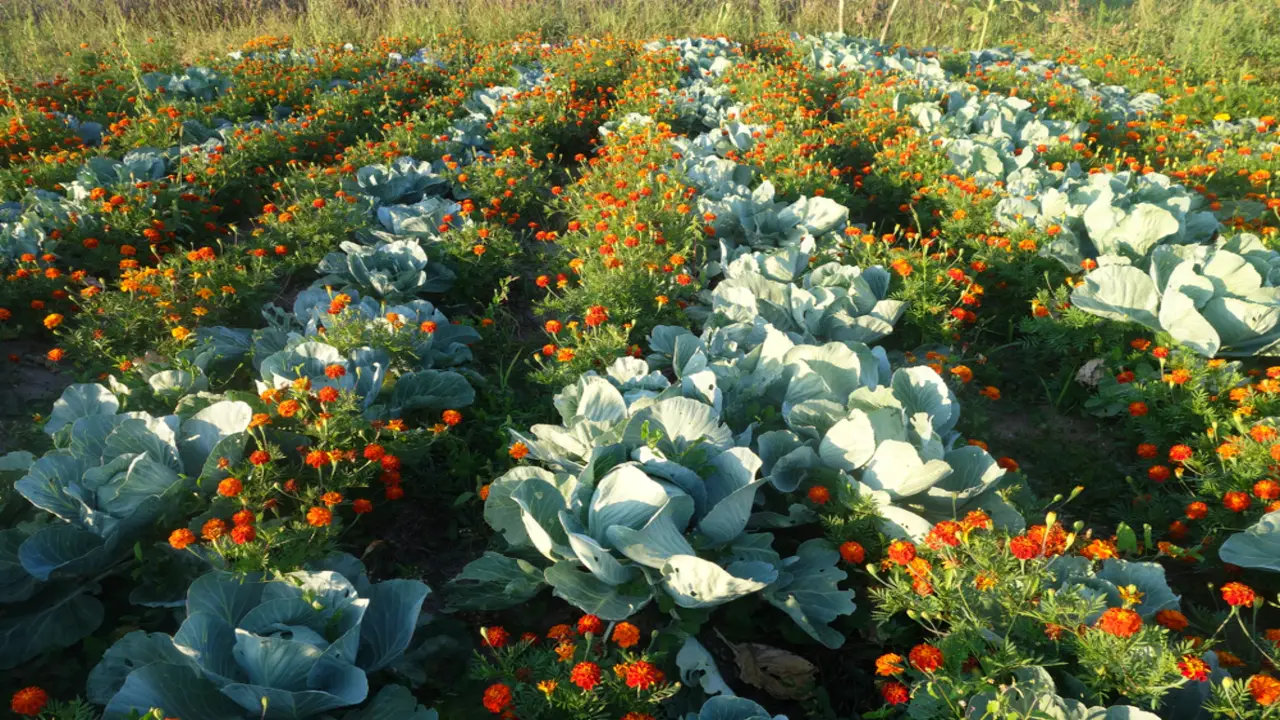
Cabbage is an excellent companion plant for rhubarb. It helps repel pests like cabbage worms, benefiting the growth of the rhubarb plant. The large cabbage leaves provide shade, preserving soil moisture for rhubarb’s optimal growth. Cabbage and rhubarb have different root depths, allowing them to utilize the same garden space effectively.
When grown together, cabbage and rhubarb create a visually appealing vegetable garden. Additionally, the strong scent of cabbage helps mask the odor of rhubarb, reducing attraction to pests. These factors make cabbage one of the best rhubarb-companion plants, enhancing their growth and garden layout.
8.Lettuce
Lettuce can be a suitable companion plant for rhubarb as its shallow roots won’t compete for nutrients. The leafy foliage of lettuce provides shade and helps prevent soil erosion around the rhubarb plant. Growing lettuce near rhubarb creates a visually pleasing combination of colors and textures. Lettuce, being a cool-season crop, complements the early spring growth of rhubarb. The close spacing of lettuce plants acts as a living mulch, suppressing weeds and conserving soil moisture.
9.Onions
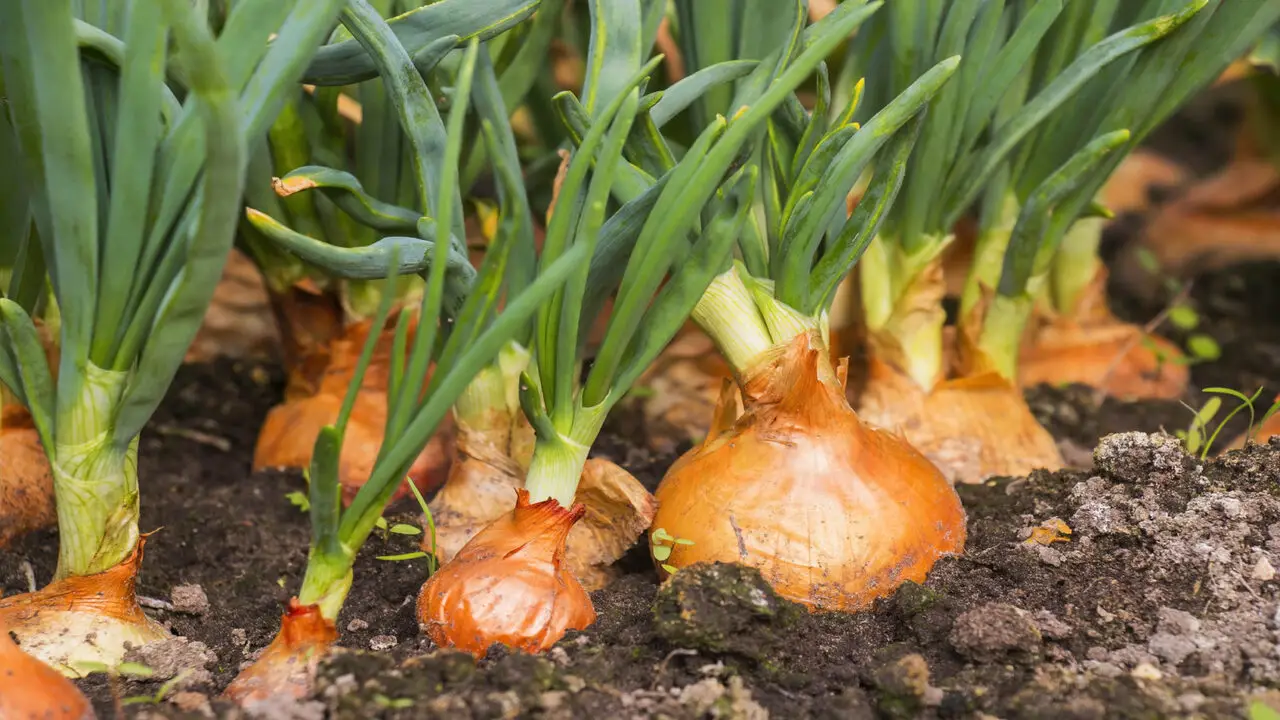
Onions are excellent companion plants for rhubarb as they deter many common garden pests. Their strong scent helps mask the odor of rhubarb, reducing pest attraction. Onion plants act as a natural barrier, deterring pests from reaching the rhubarb plant.
Additionally, growing onions near rhubarb provides a visual contrast and adds aesthetic appeal to the garden. Onions and rhubarb have similar soil and water requirements, making them compatible companions. By planting onions alongside rhubarb, you can create a harmonious garden layout that benefits the growth of both plants and enhances the overall beauty of your garden.
10.Tomatoes
Tomatoes can be excellent companion plants for rhubarb due to their similar sun and water requirements. The tall growth habit of tomatoes provides much-needed shade to the rhubarb plant during hot summer days. Additionally, the combination of vibrant red tomatoes and the large, lush leaves of the rhubarb plant creates a visually appealing garden display.
Moreover, the nitrogen-fixing ability of rhubarb benefits the heavy-feeding nature of tomatoes. Furthermore, the sprawling nature of tomatoes maximizes yield and utilizes garden space efficiently. Rhubarb and tomatoes make a winning combination in both visual appeal and practicality.
Planting And Care Tips For Rhubarb And Companion Plants
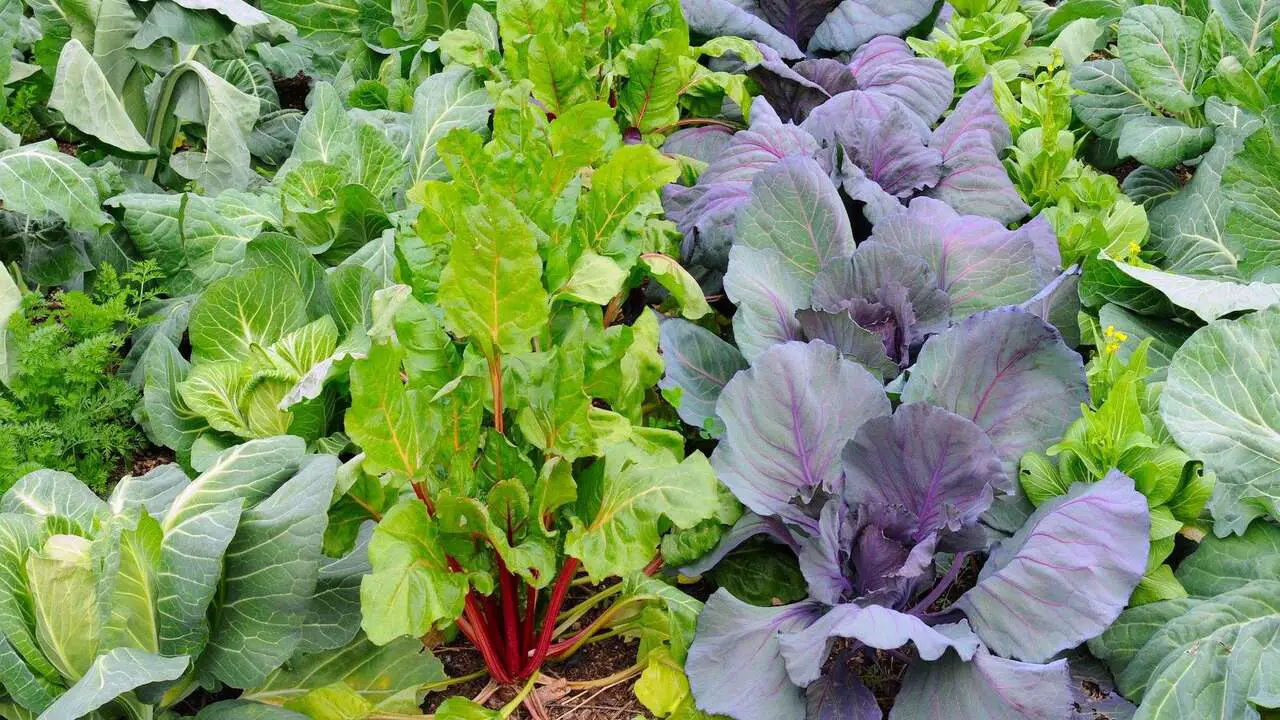
There are a few tips to remember when it comes to planting and caring for rhubarb and companion plants. Following these planting and care tips ensures that your rhubarb plants thrive alongside their companion plants, resulting in a healthy and productive garden. Here are some important considerations:
- Planting: Rhubarb is best planted in early spring or late fall when the soil is cool. Choose a location with well-drained soil and full sun exposure. Space rhubarb plants about 3 feet apart to allow for proper growth.
- Soil Preparation: Amend the soil with organic matter such as compost or well-rotted manure before planting. This will help improve drainage and provide essential nutrients for healthy plant growth.
- Watering: Rhubarb requires regular watering, especially during dry spells. Keep the soil consistently moist but not overly saturated. Be careful not to overwater, as this can lead to root rot.
- Fertilizing: Apply a balanced fertilizer in early spring before new growth appears. Follow the package instructions for proper application rates.
- Companion Plants: Rhubarb benefits from being planted alongside certain companion plants that can help deter pests and improve overall garden health. Good companion plants for rhubarb include garlic, onions, beans, and peas.
Managing Pest And Disease Issues In Companion Planting
To ensure the health and productivity of your companion plants, it’s essential to manage pest and disease issues effectively. Regular monitoring is key – keep a close eye on the leaves of the rhubarb plant and other companion plants for any signs of pests or diseases. If detected, take prompt action to prevent further damage. Implement cultural practices like crop rotation and proper sanitation to reduce the risk of pest and disease buildup.
Consider using natural pest control methods such as handpicking, trapping, or introducing beneficial insects. Also, maintain good garden hygiene by removing diseased or infested plant material. As a last resort, organic pesticides or insecticidal soaps can be used if pest populations become overwhelming. By being proactive and attentive, you can protect your companion plants from potential harm.
Harvesting And Using Rhubarb And Companion Plants
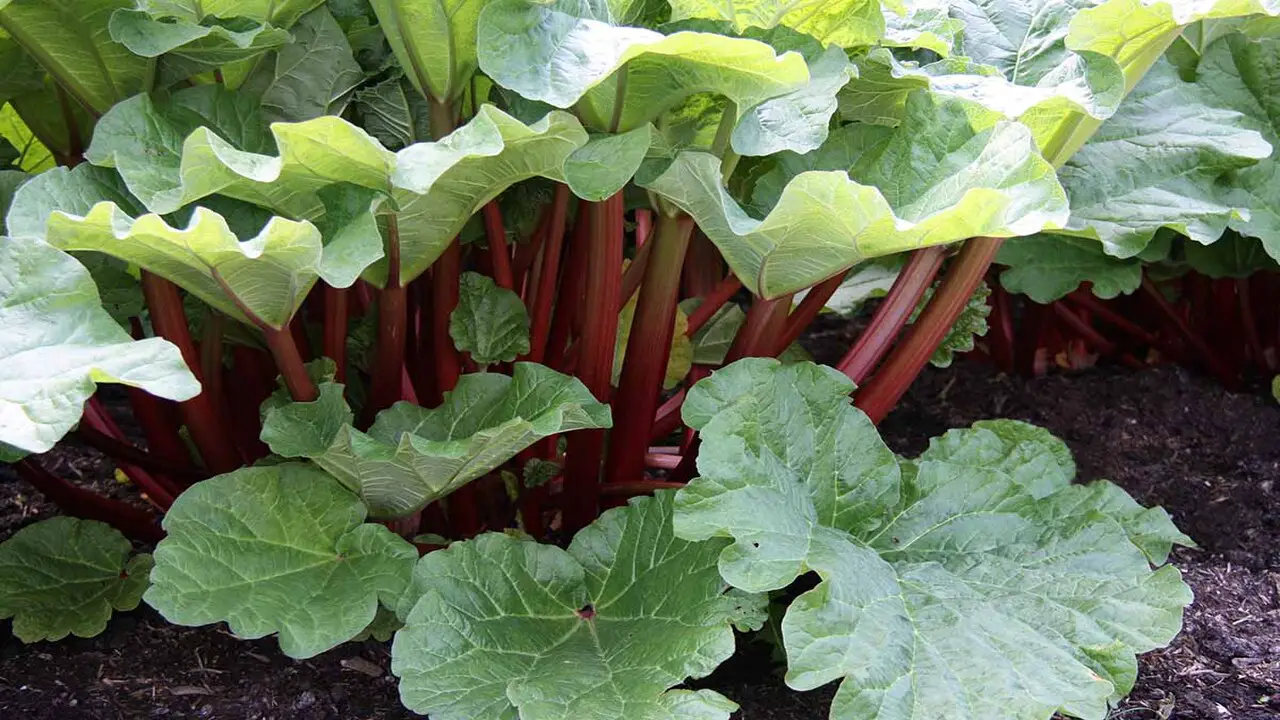
Harvesting and using rhubarb and companion plants is an exciting part of the gardening journey. When it comes to rhubarb, it’s important to harvest the stalks when they are firm and crisp, avoiding any overly woody or wilted. As for companion plants like lettuce and cabbage should be harvested when they have reached the desired size and maturity. Once you have your harvest, the culinary possibilities are endless.
From delectable pies to refreshing salads and savory stir-fries, rhubarb and companion plants can add a unique twist to your dishes. To maximize your bountiful harvest, consider preserving the excess by freezing, canning, or pickling for future enjoyment. And don’t forget to share the joy of homegrown produce with friends, family, or neighbors. Harvesting and using rhubarb and companion plants is a delightful way to savor the rewards of your garden.
Troubleshooting Common Issues In Rhubarb Companion Planting
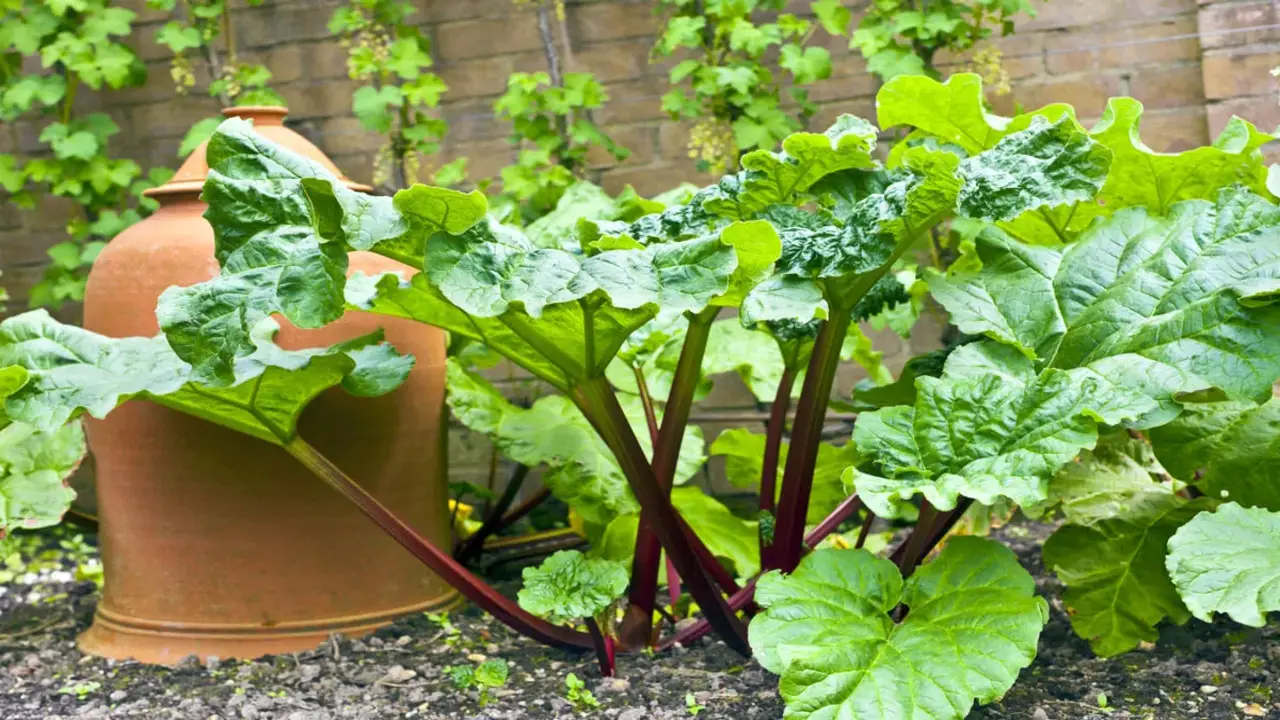
When companion planting with rhubarb, a few common issues may arise. By being aware of these common issues and taking proactive steps, you can ensure successful companion planting with your rhubarb crop. Here are some troubleshooting tips to help you navigate these challenges:
- Overcrowding: Rhubarb plants need plenty of space to grow and thrive. If your companion plants crowd the rhubarb, it can lead to poor growth and reduced yields. Make sure to give each plant enough room to spread out.
- Competition For Nutrients: Some companion plants may compete with rhubarb for nutrients in the soil. To address this, consider adding organic matter or compost to the soil to improve fertility and ensure that the rhubarb and companion plants can access the necessary nutrients.
- Pest Control: While certain companion plants can help deter pests, others may attract them. Look for any signs of pest damage on your rhubarb or its companions, and take appropriate measures to control pests if necessary.
- Disease Management: Rhubarb is susceptible to certain diseases, such as crown rot or powdery mildew. Be vigilant in monitoring your plants for any signs of disease and take prompt action, such as removing infected plant material or using organic fungicides.
Conclusion
Companion planting with rhubarb offers a range of benefits, including improved pest control, increased pollination, and enhanced soil fertility. You can create a thriving garden ecosystem by selecting the right companion plants based on their compatibility and soil requirements. Additionally, proper care and maintenance, such as regular watering, pruning, and managing pests and diseases, will help ensure the success of your rhubarb and companion plants.
From the traditional combination of strawberries and rhubarb in pies to the lesser-known pairing with onions, the possibilities for companion planting with rhubarb are endless. Try it in your garden and see its positive effects on your rhubarb and other plants. We hope you understand rhubarb companion plants. Happy gardening!
Frequently Asked Questions
1.What Should You Not Plant Near Rhubarb?
Ans: When planting rhubarb, it’s important to choose the right companion plants. Avoid planting members of the brassica family like cabbage and broccoli and nightshade family members such as tomatoes and peppers. Rhubarb should not be planted in recently manured soil and keep invasive herbs like mint away.
2.Can Asparagus And Rhubarb Be Planted Together?
Ans: Yes, asparagus and rhubarb can be planted together as companion plants in the garden. Asparagus benefits from the shade provided by rhubarb foliage, while rhubarb helps deter pests that may attack asparagus. Just make sure to give both plants enough space to grow and thrive.
3.Can You Plant Tomatoes Next To Rhubarb?
Ans: Planting tomatoes next to rhubarb is not recommended. Rhubarb is a heavy feeder and may compete with tomatoes for nutrients. Additionally, tomatoes are susceptible to diseases that can spread to the rhubarb plant. Consider choosing other companion plants like beans, peas, or lettuce instead.
4.What Plants Grow Well With Rhubarb?
Ans: Beans, peas, and various brassicas like broccoli and cabbage make excellent companion plants for rhubarb. Other compatible options include celery, lettuce, spinach, and strawberries. Avoid planting rhubarb near nightshade varieties such as tomatoes and peppers to prevent attracting common pests. You can also repel pests naturally by incorporating herbs like chamomile and sage around your rhubarb.
5.How Many Rhubarb Plants Do I Need?
Ans: To determine how many rhubarb plants you need, consider how much you want to harvest. Each mature plant can yield around 3-4 pounds of rhubarb per season. A general guideline is to plant one or two rhubarb plants per person in your household, providing enough space for each plant to grow, typically 3-4 feet apart.

